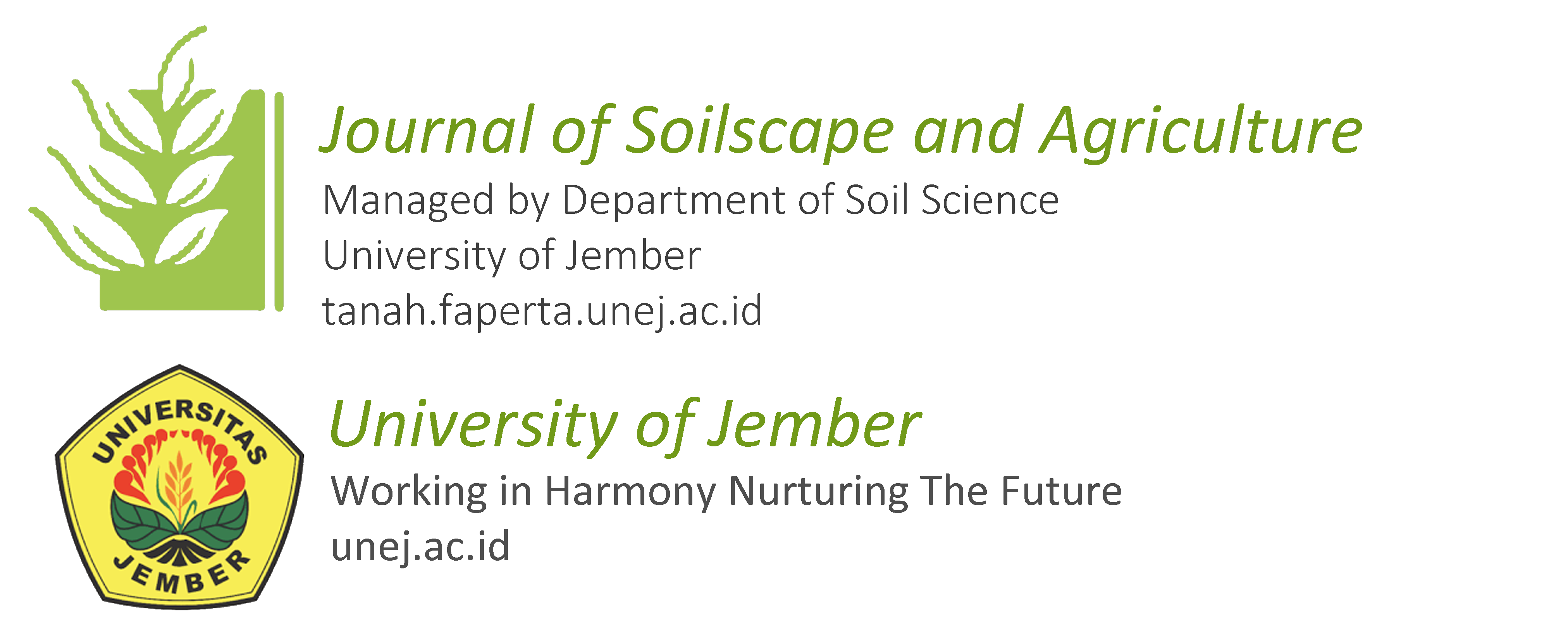Microbiological Analysis of Well Water Quality in Market and Residential Areas of Kendari City
DOI:
https://doi.org/10.19184/jsa.v3i1.1553Keywords:
Community settlement, Market, Microbiological Parameters, Well Water QualityAbstract
Water is an essential element for human life; without water, humans will experience a lack of fluid, the fluid in the human body is around 50-80. Water can fulfill daily needs through human activities such as washing clothes, water for drinking, bathing, and so on. Well, water is suitable for use if it meets water quality standards. This type of research uses descriptive research methods. This research is located in Baruga Market, Anduonohu Market, Lorong Salangga, and Kendari Permai Kendari City in December 2023. the samples used in this study amounted to 4 wells. The results obtained in this study are that all well water is polluted with E. coli, and Baruga Market well water exceeds the quality standards for Coliform parameters. The presence of E. coli in all well water samples indicates fecal contamination, posing severe health risks such as waterborne diseases. Baruga Market's well water exceeds Coliform standards, likely due to sewage runoff, making it unsafe without treatment. Immediate actions, like improving sanitation and providing clean water alternatives, are necessary to prevent further contamination and protect public health.
References
BPS Kendari City.2023.Kambu Sub-district in Figures.
Budiarti, A., Rupmini, Soenoko, H.R., 2013. Assessment of Well Water Quality as a Source of Drinking Waterin Gubug Village, Gubug Subdistrict, Grobogan Regency. Journal of Pharmaceutical Science & Clinical Pharmacy, 10(1): 7-12.DOI:http://dx.doi.org/10.31942/jiffk.v10i1.868.
Darma, A. A. N. H. (2020). Microbiological test of dug well water in the Kebon Sari area of Kampung Baru Village using the double tube technique. International Journal of Applied Chemistry Research, 2(1),18.https://doi.org/10.23887/ijacr.v2i1.28719.
Ministry of Health of the Republic of Indonesia,1991, Guidebook for Water Microbiology Examination, Jakarta.
Ezeh,C.C.& Udourioh, Godwin & Echoke,J.C.& Matthews-Amune, Omono. 2020.Well Water Quality Assessment: A Case of Gaba and Zuma Communities, Bwari Area Council, Abuja, Nigeria. Journal of Applied Sciences and Environmental Management.24: 967-974.10.4314/jasem.v24i6.4.
Hadijah S. 2017. Analysis of MPN (Most Probable Number) Coliform in the dugwell water of residents living around the Mataallo Village Canal, Bajeng District, Gowa Regency. Journal of Health Analyst Media. 8(2):83-90.
Hidayah, H., Lidia, I., Mursal, P., Susaningsih, H. A., & Amal, S. 2022. Analysis of Coliform bacteria contamination and identification of Escherichia coli in block ice cubes in Karawang City. PharmaXplore – Journal of Pharmaceutical Science and Technology,7(1): 54-68.
Indonesian Ministry of Health. 2010. Regulation of the Minister of Health of the Republic ofIndonesia Number 492/Menkes/Per/IV/2010, Drinking Water Quality Requirements. Ministry of Health of the Republic of Jakarta.
Kusuma E A, Roslaili R, Endrianaldi. 2015. Identification of Coliform Bacteria in Wastewater in Restaurant in Andalas Village, Padang Timur Subdistrict. Journal of Medicine Unand, 4(3): 845-849.
Marsono. 2009. Factors Associated with Bacteriological Quality of Dug Well Water in Settlements, Study in Karanganom Village, Klaten North Subdistrict, Klaten.Thesis. Master Program in Environmental Science-University of Diponegoro.
Munfiah S. Nurjazuli, Onny, S. 2013. Physical and Chemical Quality of Dug Wells and Drilled Wells in the Working Area of the Guntur II Health Center, Demak Regency. Indonesian Journal of Environmental Health.12(21): 154-159
Regulation of the Ministry of Health of the Republic of Indonesia.1990. Regulation of the Minister of Health of the Republic of Indonesia Number 416/MENKES/PER/IX/1990, Conditions and Supervision of Water Quality. Ministry of Health of the Republic of Indonesia. Jakarta.
Putra, C. M. M. (2017). Kediri District Post Natural Phenomena of Sinking Wells. Journal of Environmental Health,10(4): 360-367.
Rahayu, T. (2019. Characteristics of Shallow Well Water in Kartasura Region and its PurificationEfforts
Ramadhan,Tosepu.,Dian,Utama,Pratiwi.(2023).The Distribution of Using Clean Water Facilities in Poasia District Kendari City. KnE Social Sciences, doi:10.18502/kss.v8i9.13334
Sari, S. N. E. Apriliana, Susianti , T.U. Soleha. 2019. Identification of Escherichia coli Bacteria in Dug Well Water in Kelapa Tiga, Kaliawi Persada and Pasir GintungVillages, Bandar Lampung City. Medula, 9(1): 57-65.
Sasongko, E. B, Widyastuti, E and Priyono, R.E. 2018. Assessment of Water Quality and Use of Dug Wells and Euscheria coli Content in Dug Well Water in Tuminting Village, Tuminting Subdistrict, Manado City. Journal of Biomedicine, JBM,2(3): 41-49
Suamba,I.B.P.2017.Water in Balinese Civilization. Material for literary meeting on June 9, 2017.Denpasar.
Sudiartawan,I.P.2021.Water Quality of Dug Wells around Yehembang Village Market, Mendoyo District, Jembrana Regency.Widya Biologi, 12(2): 127-138.
Sunarti, Riri Novita. 2015. Well Water Quality Test Using the MPN (Most Probable Numbers) Method. Bioilmi1(1):30-34.
Winarni, F., & Puspitasari, D. E. 2013. The Role of Government in Overcoming Groundwater Pollution by E. coli Bacteria in Yogyakarta City. Mimbar Hukum-Faculty of Law, Gadjah Mada University 25(2): 219-230.
Wulan,TS. 2016. Analysis of Well Water Quality in the Community of Lalolara Village, Kambu District (Case Study of Well Water of LalolaraVillageResidents).Thesis. Halu Oleo University. Kendari.
W.Widyaningsih, S.Supriharyono, and N.Widyorini,"Analysis of Total Coliform Bacteria in the Estuary Waters of Kali Wiso Jepara,"Management of Aquatic Resources Journal (Maquares), 5(3): 157-164 .Https://Doi.Org/10.14710/Marj.V5i3.14403
Yunita, Z.2015.Contribution of Flamboyan Market Liquid Waste to Water Quality in Tokaya Trench, Pontianak City.Tanjungpura University, Pontianak.
Yunus, N. M. (2018). Analysis of gallon water quality at drinking water depots in Palopo CityusingtheMPN (Most Probable Number) method.Biogeneration,3(2),: 1-6.
Downloads
Published
How to Cite
Issue
Section
License
Copyright (c) 2024 Journal of Soilscape and Agriculture

This work is licensed under a Creative Commons Attribution-NonCommercial-ShareAlike 4.0 International License.



